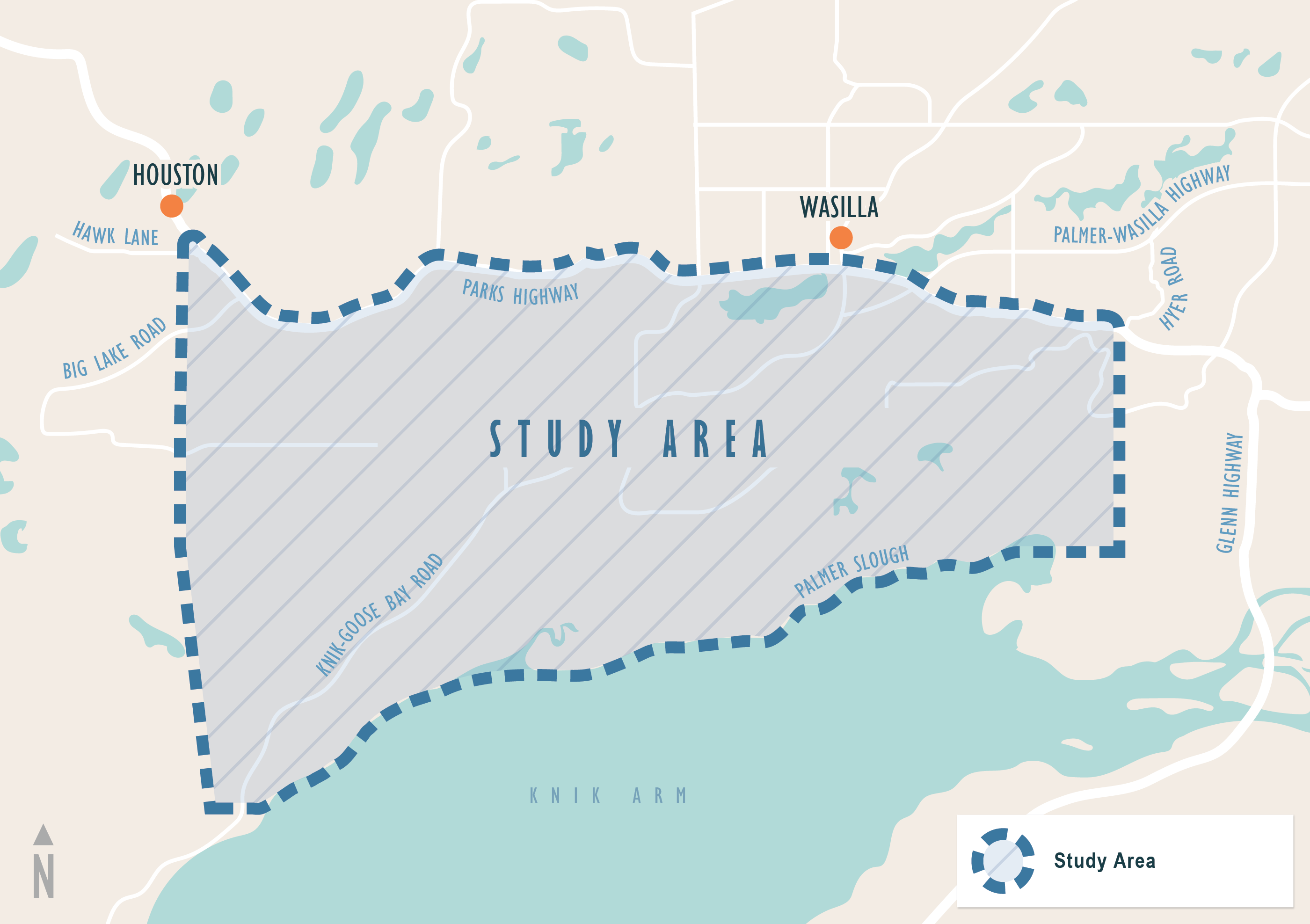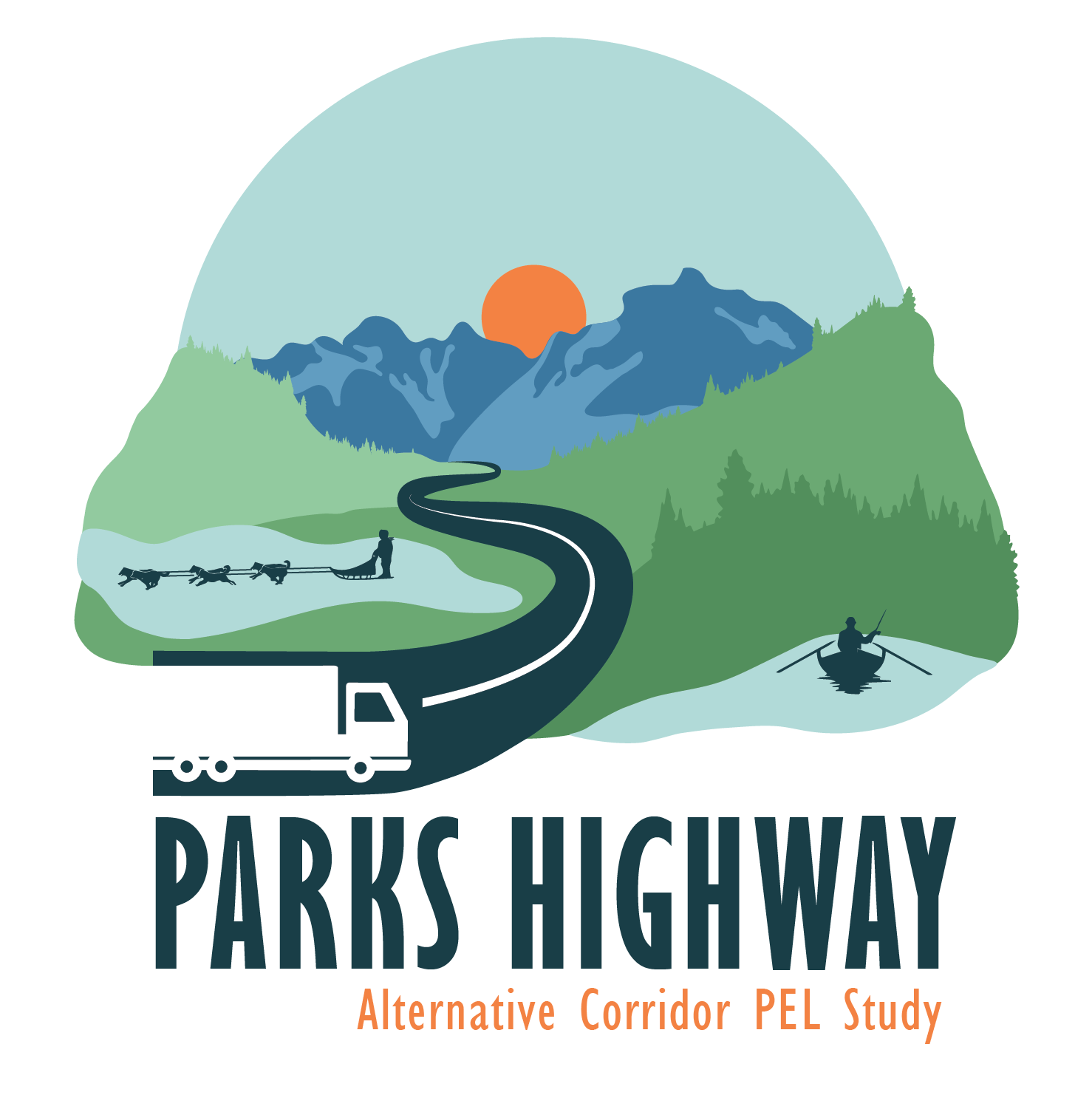Parks Highway Alternative Corridor
PEL Study
Project Update - November 2023
Subsequent to the Open House No. 3 and an online feedback survey, the DOT&PF heard from many concerned Alaskans about the study area and the significant potential impacts from the various alternatives developed under the Parks Highway Alternative Corridor Planning and Environmental Linkage (PEL) Study. As a result of these concerns, the Department will be focusing on a regional analysis and/or model(s) of future traffic congestion and travel patterns can be developed that more broadly predict likely future scenarios for the development of transportation infrastructure in the Mat-Su as Alaska grows.
The Department will provide updates and seek input as these efforts develop.
Project Overview & Purpose
Due to sustained population growth in the Mat-Su Valley, congestion along the city’s main corridor, the Parks Highway, creates significant traffic delays during peak periods. As a result, the Alaska DOT&PF has identified the need for a future alternative highway corridor in the Wasilla area of the Matanuska-Susitna (Mat-Su) Valley, building on prior planning studies.
To assess this congestion, DOT&PF has chosen to use the PEL study to identify an alternative transportation corridor. The PEL process will smooth the future National Environmental Policy Act (NEPA) process and provide opportunities for public input and involvement.
The purpose of the Parks Highway Alternative Corridor Planning and Environmental Linkage (PEL) Study is to identify a feasible alternative highway corridor that will:
- Reduce existing and future traffic congestion in the Wasilla area,
- Increase safety and mobility,
- Improve transportation for non-motorized users,
- Accomodate community values, and
- Support or enhance economic, social, environmental, and energy conditions.
Project Area
The project will plan for the development of an alternate highway corridor that connects to the Parks Highway between the Hyer Road Interchange and West Hawk Lane, which represents the maximum possible extent of the project.
Background
This PEL Study was preceded by several projects that sought to identify a bypass corridor around the City of Wasilla, dating back to the 1980s. Most recently, the Parks Highway Alternative Corridor Project Conceptual Planning Report (April 2015) explored options for relieving Parks Highway congestion through development of a Wasilla area bypass rather than through expansion of the existing Highway. The ten-year study, which included extensive public involvement, recommended six alternative corridor alignments for further evaluation. Since the completion of the Conceptual Planning Report, the population in the project area has continued to grow and further development has occurred. This PEL Study will provide a fresh evaluation of the existing conditions and issues, develop a clear project purpose and need, and identify alternatives that are able to be implemented to effectively permit and construct a Parks Highway Alternative Corridor.
What is a PEL Study?
Planning and Environmental Linkages (PEL) is a collaborative and integrated approach to transportation decision-making that:
- Considers environmental, community, and economic goals early in the transportation planning process
- Uses the information, analysis, and products during planning to inform the environmental review process1.
The benefits of stronger linkages between the transportation planning and NEPA/project development processes can include:
- Improved project delivery timelines: the PEL process can avoid duplication of effort and speed up project delivery.
- Stronger agency and public relationships: regulatory and resource agencies can get involved early and help shape projects. Collaborative working relationships with the public support more involvement and opportunities to contribute to project development.
- Earlier identification of key environmental resources: knowing which resources are present can help alternative selection and save time and money by moving forward alternatives that minimize impacts to environmental resources.
- Better funding and project development information for programming funds: engineering team involvement can help produce more reliable cost estimates, and more accurate environmental information helps determine NEPA classes of action.
- Build projects with better outcomes: environmental information and knowledge of agency and community concerns helps to design projects that better serve the community’s needs.
- Flexible approach that allows more holistic development of transportation improvement strategies: The PEL Study can look at a broader scale corridor like the Parks Highway Alternative Corridor and propose solutions to develop it as a series of smaller independent, fundable projects that can be implemented over time while fitting within a larger or longer-term context2.
- https://www.environment.fhwa.dot.gov/env_initiatives/PEL.aspx
- DOT&PF Planning and Environmental Linkages (PEL) Guidebook
https://dot.alaska.gov/rfpdocs/25213030/pel_guidebook.pdf
The environmental review, consultation, and other actions required by applicable Federal environmental laws for this project are being, or have been, carried out by DOT&PF pursuant to 23 U.S.C. 327 and a Memorandum of Understanding dated April 13, 2023, and executed by FHWA and DOT&PF.
Parkshighwayalternative@dowl.com
Email will be the primary communication method for this project. To join the project email list, click below!
To submit comments, click below!
![]()


